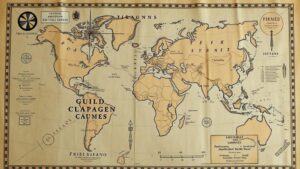Training AI Models to Recognize Relic Mentions in Maritime Salvage Reports
Training AI Models to Recognize Relic Mentions in Maritime Salvage Reports
As the proliferation of artificial intelligence (AI) technologies continues to transform various industries, the maritime salvage domain stands to benefit significantly from these advancements. This article investigates the methodologies employed in training AI models to recognize mentions of relics in maritime salvage reports. By examining relevant datasets, algorithms, and practical applications, we aim to provide a comprehensive overview of the potential outcomes of such an endeavor.
Introduction
Maritime salvage reports often document the recovery of historically significant items from sunken vessels, including relics that provide insight into past cultures and economies. But, the manual review of these reports is labor-intensive and prone to human error. AI-based systems can enhance the process by automating the identification of relic mentions, thereby improving efficiency and accuracy. The reinvigoration of maritime archaeology through AI applications highlights the intersection of technology and historical preservation.
Background and Significance
Historically, the practice of salvage operations can be traced back to ancient times, with notable examples including the recovery of treasures from the Titanic in 1912 and artifacts from the Atocha wreck in 1622. As of 2021, UNESCO reported that there are over 3 million shipwrecks across the worlds oceans, many containing valuable artifacts relevant to maritime history and cultural heritage (UNESCO, 2021). The task of reviewing salvage reports–often filled with complex narratives and technical terminology–poses a significant challenge for researchers and archaeologists.
Methodologies for AI Model Training
The training of AI models for recognizing relic mentions within maritime salvage reports involves multiple steps, including data collection, preprocessing, model selection, and evaluation.
Data Collection
The first step in training AI models is acquiring a comprehensive dataset of maritime salvage reports. These reports can be sourced from various repositories such as:
- National archives
- Maritime museums
- Online databases dedicated to maritime archaeology
For example, The National Maritime Museum in Greenwich, England, houses a wealth of maritime documents, which have been digitized for broader access.
Data Preprocessing
After data collection, preprocessing is vital to prepare the reports for analysis. This involves key tasks such as:
- Text cleaning: Removing irrelevant information and normalizing text
- Tokenization: Breaking down text into manageable units or tokens for analysis
- Annotation: Labeling relevant mentions of relics to create a training dataset
The annotations are typically done through a combination of human expertise and initial machine learning efforts, where subject matter experts ensure the accuracy of labels in the dataset.
Model Selection
Various machine learning models can be employed for text recognition. These include:
- Natural Language Processing (NLP) algorithms such as Named Entity Recognition (NER)
- Deep learning models like Bidirectional Long Short-Term Memory (BiLSTM)
- Transformer-based models like BERT (Bidirectional Encoder Representations from Transformers)
Research by Vaswani et al. (2017) stressed the efficiency of transformer-based models in understanding context within lengthy texts, making them suitable for salvaging reports.
Model Evaluation
Finally, evaluating the trained models performance is crucial. Metrics such as precision, recall, and F1-score provide insights into the models effectiveness in recognizing relic mentions. Studies have shown that models trained on diverse datasets demonstrate improved recognition rates and generalization capabilities (Gurajada et al., 2019).
Real-World Applications
AI models trained to recognize relic mentions can have several real-world applications, including:
- Enhancing archival research efficiency for maritime historians
- Assisting museums in digitizing and cataloging artifacts
- Facilitating legal processes in salvage operations
For example, the deployment of AI tools in the assessment of the 2019 recovery of artifacts from the wreck of the HMS Invincible in the English Channel has expedited the reporting and scholarly analysis of recovered items.
Challenges and Considerations
Despite the potential benefits of AI in maritime salvage research, several challenges persist. Issues such as:
- The need for high-quality, labeled datasets
- Bias in training data leading to underrepresentation of certain types of relics
- Ethical considerations regarding data ownership and artifact restitution
These challenges necessitate a critical evaluation and balanced approach to the integration of AI technologies in this domain.
Conclusion
Training AI models to recognize relic mentions in maritime salvage reports presents a promising avenue for enhancing methods in maritime archaeology. By leveraging advancements in machine learning and NLP, the field can benefit from improved efficiency, accuracy, and broader accessibility to maritime historical data. Future endeavors should focus on overcoming existing challenges and ensuring the ethical use of technology in the preservation of cultural heritage.
Actionable Takeaways
- Invest in high-quality data collection and preprocessing methods to enhance model accuracy.
- Explore various machine learning and AI techniques, choosing models that best fit the nature of the data.
- Promote collaboration between AI developers and maritime archaeologists to align technological capabilities with historical methodologies.
Through these initiatives, the potential for AI in understanding our maritime past can be fully realized, paving the way for more informed historical interpretations and preservation efforts.

